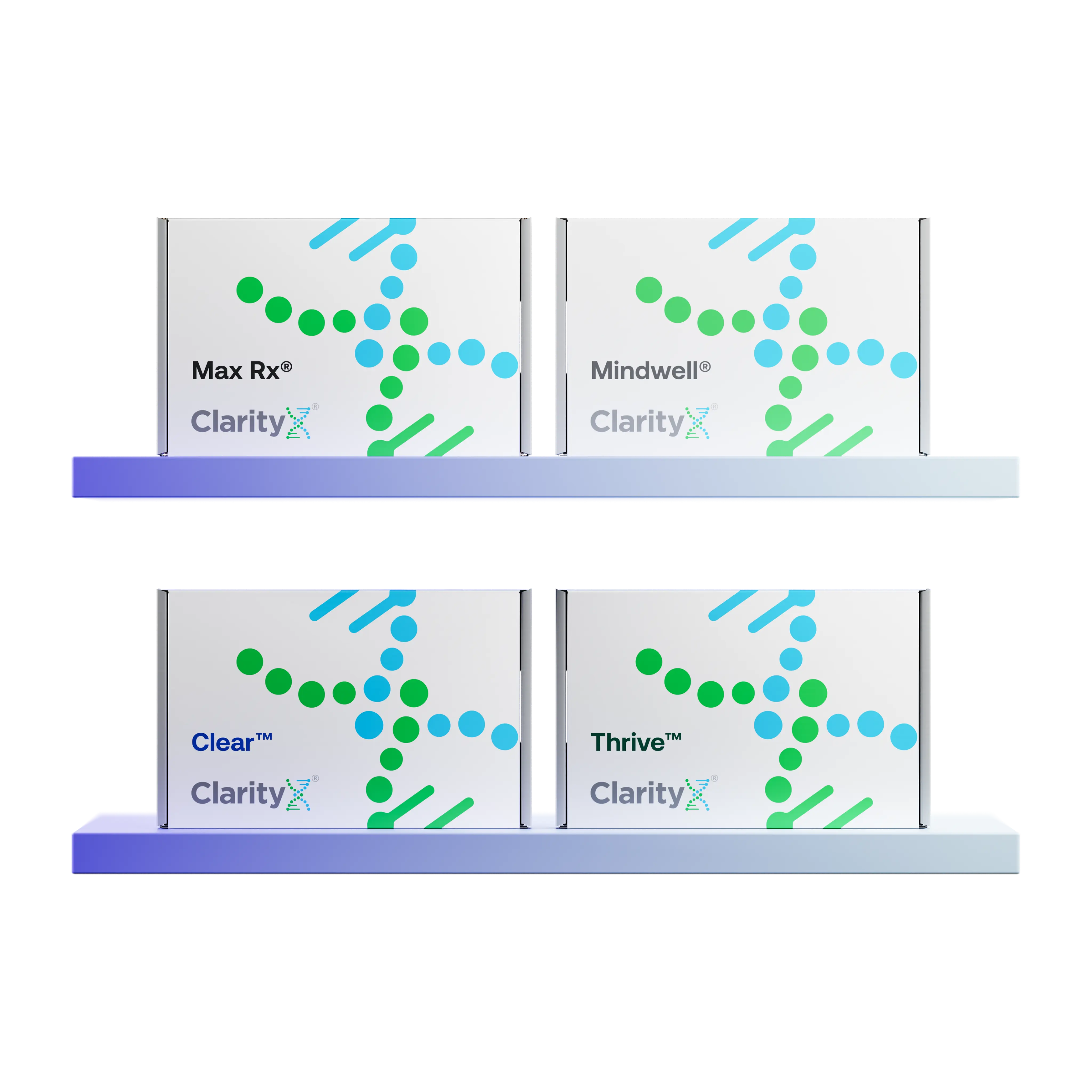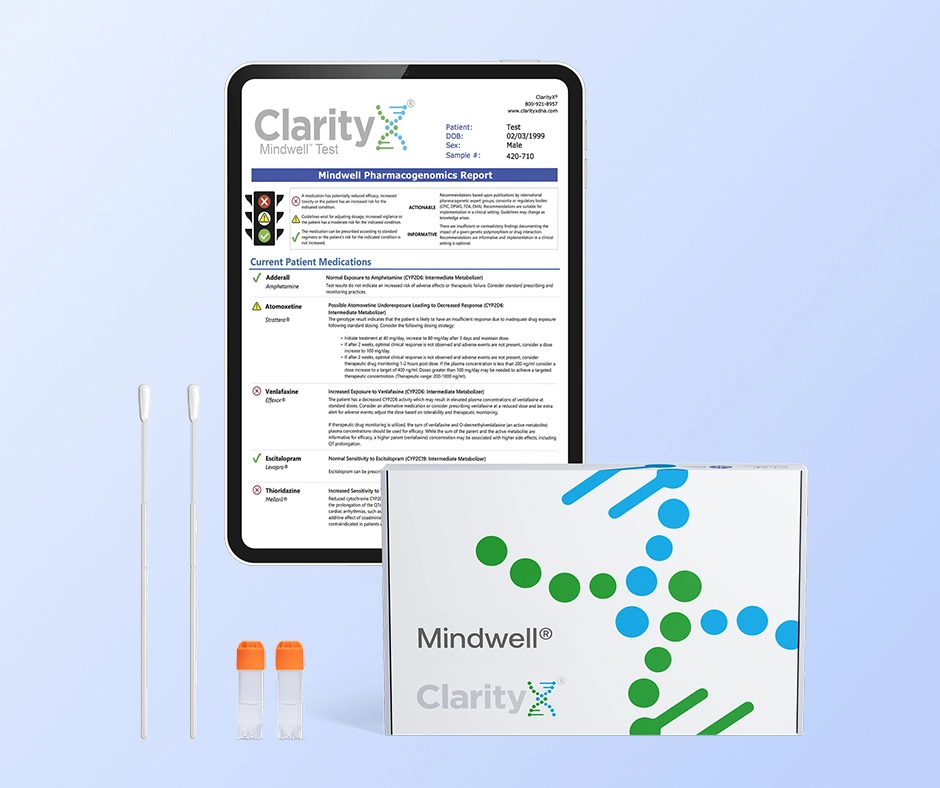Key Highlights
- Diazepam (Valium) and alprazolam (Xanax) are both benzodiazepine medications commonly used to treat anxiety disorders.
- Both medications enhance the effects of gamma-aminobutyric acid (GABA), an inhibitory neurotransmitter in the brain.
- Clinical trials have shown that both Xanax and Valium are effective for anxiety management. Xanax is sometimes chosen for as-needed therapy due to its shorter duration of action. This can allow for targeted therapy with fewer lingering side effects, depending on individual needs.
- Valium is also prescribed for muscle spasms, alcohol withdrawal, and seizure disorders, while Xanax can also be used to manage panic disorders.
- Both medications have similar side effects, but Valium may cause drowsiness for longer periods of time after each dose. In contrast, Xanax may have a higher risk of withdrawal symptoms due to its shorter duration of action.
- Working closely with a healthcare provider to determine the most suitable treatment option based on individual needs and medical history is important.
Introduction
Diazepam (Valium) and Xanax (alprazolam) are both prescription medications classified as benzodiazepines. These drugs are commonly prescribed to treat anxiety disorders, as they work by enhancing the effects of gamma-aminobutyric acid (GABA), an inhibitory neurotransmitter in the brain. Increasing the activity of GABA allows Valium and Xanax to help reduce anxiety symptoms and promote calm.
While Valium and Xanax belong to the same drug class and have similar mechanisms of action, there are some differences between the two medications. These differences can affect their effectiveness, side effects, and potential for dependence. Understanding these differences can help individuals and healthcare providers make informed decisions about which medication may be more suitable for their specific needs.
In this blog, we will explore the similarities and differences between diazepam (Valium) and alprazolam (Xanax). We will discuss their effects, mechanism of action, conditions they treat, side effects, dosage guidelines, and the risk of dependence and withdrawal. Additionally, we will address common questions and concerns regarding the use of these medications for anxiety. It is important to note that the information provided in this blog is for informational purposes only and should not replace the advice of a healthcare professional.
Understanding Diazepam and Xanax
Diazepam and Xanax belong to the benzodiazepine family, commonly prescribed for anxiety and related disorders. Both act on the central nervous system by enhancing the effects of gamma-aminobutyric acid (GABA), a neurotransmitter that reduces brain activity. Diazepam, also known as Valium, has a longer duration of action compared to Xanax. On the other hand, Xanax, the brand name for alprazolam, is fast-acting and often used for panic disorders. Understanding the distinct characteristics of these medications is crucial for appropriate treatment planning and management.
What is Diazepam?
Diazepam, a benzodiazepine, is a common medication used to treat anxiety, seizures, and muscle spasms. It works by enhancing the effects of GABA in the brain. Diazepam is known for its calming and sedative properties.
What is Xanax?
Xanax, a brand name for alprazolam, is a benzodiazepine used to treat anxiety and panic disorders. It enhances the effects of a neurotransmitter in the brain called GABA. Xanax has a calming effect and can be habit-forming if not taken as prescribed.
How Diazepam and Xanax Work in the Brain
Diazepam and Xanax, both belonging to the benzodiazepine drug class, act on the central nervous system. Both medications enhance the effects of a neurotransmitter called gamma-aminobutyric acid (GABA) to produce calming effects. These medications help reduce symptoms of anxiety by modulating the electrical activity in the brain, ultimately leading to a sense of relaxation and mental calmness. Slowing down electrical impulses in the brain can also be beneficial for managing seizures.
Mechanism of Action for Diazepam
Diazepam, a member of the benzodiazepine drug class, acts on the central nervous system by enhancing the effects of gamma-aminobutyric acid (GABA), a neurotransmitter that inhibits brain activity. By increasing GABA's inhibitory actions, diazepam helps calm overactive electrical activity in the brain, leading to its anxiolytic, sedative, and muscle relaxant properties. This mechanism results in decreased anxiety, muscle tension, and hyperarousal in individuals with various conditions, including anxiety disorders, panic attacks, and seizures. Diazepam's ability to modulate GABA receptors makes it an effective prescription medication for managing these conditions.
Mechanism of Action for Xanax
Xanax, a brand name for alprazolam, works by enhancing the effects of GABA, a neurotransmitter that inhibits brain activity. This leads to a calming effect on the central nervous system, reducing symptoms of anxiety. Xanax acts quickly, making it effective for acute anxiety episodes. It binds to specific receptors in the brain, increasing the inhibitory function of GABA. This mechanism of action results in reduced anxiety levels and promotes relaxation.
Conditions Treated by Diazepam and Xanax
Diazepam and Xanax are commonly prescribed for anxiety disorders, panic attacks, and other related conditions. Diazepam, also known as Valium, is often used to treat symptoms of anxiety, muscle spasms, seizures, and can also be used to help manage symptoms associated with alcohol withdrawal. Xanax, on the other hand, is primarily prescribed for panic disorders and anxiety. Both medications belong to the benzodiazepine drug class and work by affecting the central nervous system to produce a calming effect.
Common Uses of Diazepam
Diazepam, a benzodiazepine medication, is commonly prescribed for treating anxiety disorders, panic disorders, and symptoms of anxiety. It is also used to alleviate muscle spasms, alcohol withdrawal symptoms, and seizures. Additionally, diazepam is administered to help with insomnia, sedation before medical procedures, and as a muscle relaxant. This prescription drug acts on the central nervous system to produce a calming effect, making it a versatile tool in managing various conditions related to mental health and the nervous system.
Common Uses of Xanax
Xanax, a benzodiazepine medication, is commonly prescribed to treat anxiety disorders, panic disorders, and anxiety symptoms. It is also used to manage panic attacks and can be part of a treatment plan for patients with generalized anxiety disorder. Additionally, Xanax is sometimes utilized in the treatment of specific phobias alongside other therapeutic interventions. This prescription drug helps in reducing the symptoms of anxiety, promoting relaxation and calming the central nervous system. Xanax is typically prescribed for short-term use due to the risk of dependence and potential side effects.
Comparing the Side Effects
Diazepam and Xanax, belonging to the benzodiazepine family, share some common side effects despite their differences. These may include drowsiness, memory problems, and dizziness, which can be particularly concerning for individuals over the age of 65. However, Xanax is known to have a more pronounced effect on coordination than Diazepam. While both can cause physical dependence, Xanax has a higher risk of addiction due to its faster onset, shorter half-life, and a potentially higher propensity for causing dopamine release. Understanding these distinctions is crucial when considering the potential side effects of these medications in the treatment of various conditions.
Side Effects of Diazepam
Some common side effects of diazepam include drowsiness, dizziness, muscle weakness, and fatigue. Similar to alprazolam, other potential side effects may comprise confusion, memory problems, and difficulty in coordination. These effects can be more pronounced in individuals over the age of 65.
It is essential to monitor for severe side effects like respiratory depression, especially if other central nervous system depressants are used (e.g., alcohol or opioid pain relievers). Diazepam can also lead to physical dependence and withdrawal symptoms if used for an extended period. Consulting a healthcare provider before starting diazepam is crucial to understanding its potential effects on individual health. It's vital to report any significant changes or unusual reactions to the healthcare team promptly.
Side Effects of Xanax
Xanax, a benzodiazepine medication, can cause various side effects. These can include drowsiness, dizziness, and memory problems. Other common side effects may involve dry mouth, blurred vision, and changes in appetite. Some individuals may experience nausea or headaches while taking Xanax. It's important to be aware of these potential side effects and consult with your healthcare provider if any persist or worsen. Additionally, Xanax has the risk of dependence and should be used under proper medical guidance to minimize adverse effects.
Dosage and Administration Guidelines
For Diazepam, the typical adult dose ranges from 2-10 mg, taken 2-4 times a day depending on the condition being managed. Dosages for Xanax usually start at 0.25-0.5 mg three times daily. Alprazolam is often chosen for as-needed use in anxiety management due to its shorter duration of action. It's crucial to follow your healthcare provider's instructions precisely. For those who have taken consistent doses over time, abruptly stopping these medications can cause withdrawal symptoms. It’s helpful to work with your provider to develop a plan for slowly reducing the dose over time.
Diazepam and Xanax can be taken with or without food but should be swallowed whole with water. Do not crush or chew extended-release forms such as Xanax XR. Always inform your healthcare team of all medications you're taking to prevent potential interactions.
Taking these medications with opioid pain relievers is not recommended due to a higher risk of developing respiratory depression. Shallow, labored breathing can be life-threatening and requires immediate medical attention.
How to Take Diazepam Safely
To take Diazepam safely, follow your healthcare provider's directions precisely. Typically, Diazepam is taken by mouth with or without food. It's crucial to swallow the tablets whole; do not crush or chew them. Avoid alcohol while on Diazepam, as it can increase side effects. Never alter your dosage without consulting your healthcare team. If a dose is missed, take it as soon as you remember unless it's almost time for the next dose. Don't double up on doses. Safe and effective medication administration is key to managing your condition.
How to Take Xanax Safely
To take Xanax safely, follow your healthcare provider's prescription carefully. Typically, Xanax is taken orally with or without food. Avoid alcohol while on Xanax to prevent adverse effects. Do not crush or chew extended-release tablets. Inform your healthcare provider about any other medications you are taking to avoid drug interactions. Do not increase the dose without consulting a healthcare professional. If you experience severe drowsiness or other concerning side effects, contact your healthcare team immediately.
The Risk of Dependence and Withdrawal
Diazepam and Xanax, both belonging to the benzodiazepine drug class, carry a significant risk of dependence and withdrawal. Prolonged use can lead to physical dependence, where the body adapts to the presence of the medication. Abruptly stopping these drugs may trigger withdrawal symptoms, including seizures and rebound anxiety. It's crucial to follow the dosage guidelines meticulously and consult a healthcare provider when discontinuing these medications to mitigate the risk of withdrawal complications. Understanding these risks is essential for safe and effective treatment.
Understanding Dependence on Diazepam
Long-term use of diazepam can lead to physical dependence. When the body becomes reliant on the medication, sudden discontinuation may trigger withdrawal symptoms. Diazepam's potential for dependence necessitates careful monitoring by healthcare providers to prevent misuse or addiction.
Patients should follow prescribed dosages strictly to minimize the risk of developing dependence. Understanding the risk of dependence on diazepam is crucial for individuals using this medication to manage conditions like anxiety disorders or seizures. Consulting with healthcare professionals can help create an appropriate treatment plan to address any dependency concerns.
Understanding Dependence on Xanax
Xanax, belonging to the benzodiazepine drug class, is known for its efficacy in treating anxiety disorders. However, its use comes with the risk of dependence and potential withdrawal symptoms upon abrupt discontinuation. Individuals taking Xanax for an extended period may develop a physical and psychological reliance on the medication, leading to withdrawal effects if stopped suddenly. Because of its shorter duration of action, withdrawal symptoms can occur more quickly.
Healthcare providers must closely monitor patients using Xanax to mitigate the risk of dependence and create a safe tapering plan when discontinuation is necessary. Understanding the potential for dependence is crucial in managing Xanax therapy effectively.
Interactions with Other Medications
When considering interactions with other medications, both diazepam and Xanax can pose risks. Diazepam, a benzodiazepine, may have significant changes when combined with alcohol or other central nervous system depressants, potentially leading to severe drowsiness or respiratory depression. Xanax, a similar benzodiazepine, can also amplify its effects if taken with alcohol or other medications affecting the central nervous system. It is crucial to inform your healthcare provider of all medications you are taking to avoid potential side effects and ensure the safe and effective use of these prescription drugs.
These medications are not recommended to be used with opioid pain relievers.
Key Drug Interactions for Diazepam
Diazepam, a benzodiazepine medication, can interact with several drugs. Combining diazepam with other central nervous system depressants like alcohol or opioids may lead to severe drowsiness or respiratory depression. Additionally, medications affecting liver enzymes, such as cimetidine, can increase diazepam's concentration in the body, potentially causing excessive sedation.
Genetic Testing For Anxiety
Genetic testing for anxiety analyzes your DNA to predict how your body will process and respond to specific medications. By examining genetic variants primarily those affecting liver enzymes the test reveals if you are likely to metabolize a drug too slowly (increasing the risk of severe side effects) or too quickly (making the medication ineffective).
This genetic insight allows doctors to move away from a "trial and error" prescribing method, helping them select the right drug and the right dose from the start to maximize treatment success while minimizing adverse reactions.
Key Drug Interactions for Xanax
Xanax, or alprazolam, interacts dangerously with other substances. Combining Xanax with alcohol intensifies sedation and can lead to respiratory depression. The simultaneous use of opioids and Xanax poses a high risk of overdose. Certain medications like antifungals, antidepressants, and oral contraceptives can also interact with Xanax, altering its effectiveness.
It's crucial to inform your healthcare provider about all medications, including over-the-counter drugs and supplements, before starting Xanax to prevent harmful interactions that can seriously impact your health.
Conclusion
In conclusion, understanding the differences between Diazepam and Xanax is crucial for making informed decisions about anxiety treatment. Each medication has its own mechanism of action, side effects, dosage guidelines, and risk of dependence. Consulting with a healthcare provider is essential to determine the most suitable option based on individual needs and medical history. Always follow prescribed guidelines and never hesitate to seek professional advice when it comes to managing anxiety effectively and safely.
Frequently Asked Questions
Is Diazepam as Effective as Xanax for Anxiety?
Yes, Diazepam is as effective as Xanax for the treatment of anxiety. Clinical trials have shown that both medications can effectively reduce anxiety symptoms. The choice between Diazepam and Xanax depends on individual factors, and it is recommended to work closely with a healthcare provider to determine the most suitable treatment plan.
Can Diazepam and Xanax Be Used Interchangeably?
Diazepam and Xanax belong to the same drug class and can both be used to treat anxiety. However, they are not interchangeable. The choice between Diazepam and Xanax should be made in consultation with a healthcare provider, taking into account individual factors, treatment goals, and potential interactions with other medications.
What Should You Do If You Miss a Dose?
If you miss a dose of Diazepam or Xanax, it is important to take it as soon as you remember. However, if it is close to your next scheduled dose, it is best to skip the missed dose and continue with your regular dosing schedule. Do not take extra medication to make up for a missed dose. If you have any concerns or questions about missed doses, it is recommended that you consult with a healthcare provider.
https://www.ncbi.nlm.nih.gov/books/NBK554498/
https://www.ncbi.nlm.nih.gov/pmc/articles/PMC5846112/
https://medlineplus.gov/druginfo/®ƒ®mfeds/a684001.html
https://medlineplus.gov/druginfo/meds/a682047.html
https://www.ncbi.nlm.nih.gov/books/NBK526124/
https://www.dea.gov/factsheets/benzodiazepines
https://www.mayoclinic.org/diseases-conditions/panic-attacks/diagnosis-treatment/drc-20376027
https://www.ncbi.nlm.nih.gov/pmc/articles/PMC8475920/
https://pubmed.ncbi.nlm.nih.gov/6993446/






